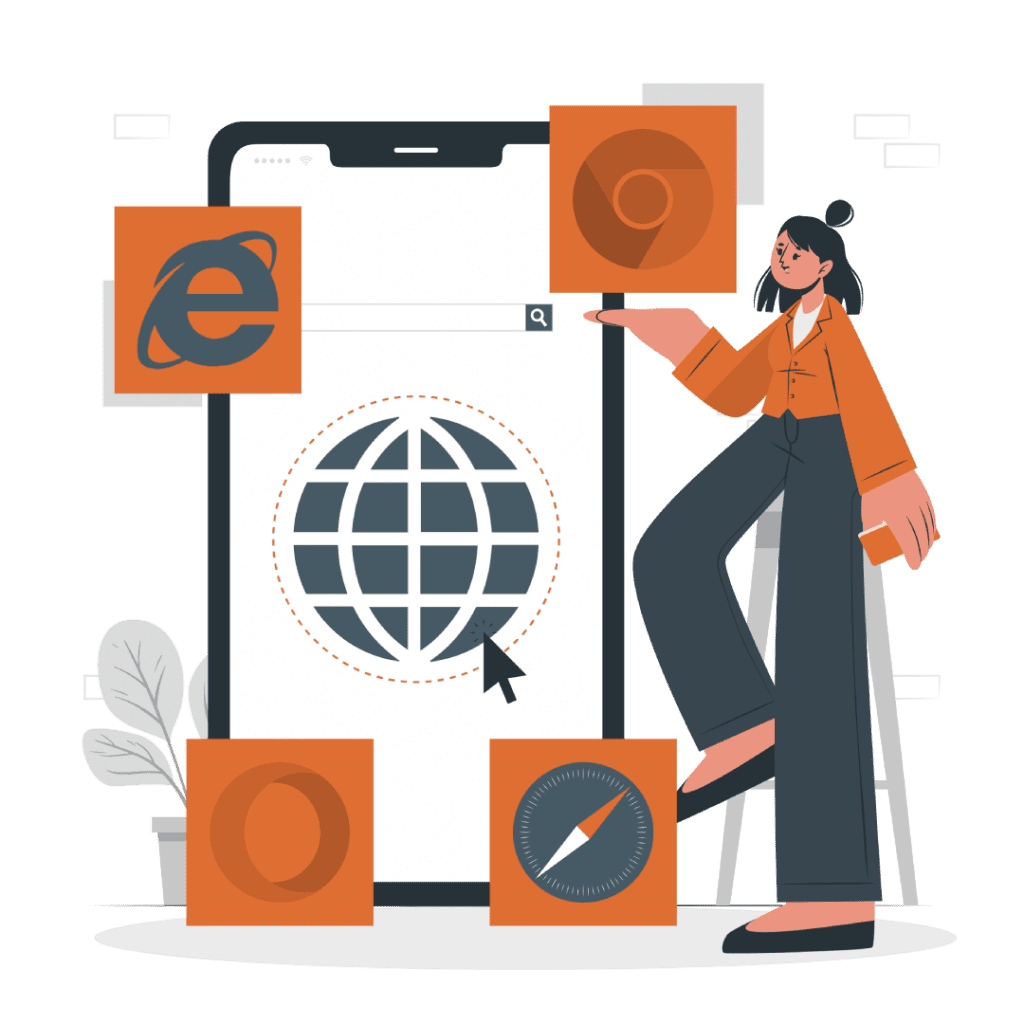Top 5 Strategies to Boost your Lead Generation by 10X

Lead generation is one of the most important aspects of any business may it be real estate, finance or education.
A recent Hubspot study found that 50% of education marketers prioritize lead generation in their marketing campaigns. Increasing sales and increasing brand awareness are typically the two main objectives of marketing. However, lead generation is still viewed as the primary objective by 50% of marketers. Additionally, according to BrightTALK, 53% of marketers spend 50% of their budget on lead generation.
With both of these metrics, we can conclude that lead generation is the most important aspect of your business and also a challenging one, as around 61% of marketers rank lead generation as their number one challenge. (Source: Hubspot) Lead generation has multiple components, challenges, and complexities. If you are someone looking for an A-Z explanation on how to increase lead generation for your institutes, then you are in the right place.
By the end of this blog, you will be able to comprehend anything and everything about lead generation, sources of leads, ways to boost your lead generation, and at the end, an additional tip on lead conversion rates, so do carry on until the very end.
Sources of Leads
Leads can come from multiple sources, like your website, social media platforms, email campaigns, references from your existing clients, or even cold calling. For instance, someone is interested in a study abroad program and searches for nearby consultancies. Here, your website pops, thanks to the efforts of your marketing team on SEO, so this person will click on the website and enquire. So, this person is your lead, and the source of your lead is your website (Organic Search). Download our latest ebook: SEO starter for education institutes 2023 Similarly, when you generate leads via Google Ads, Facebook Ads, or any other paid channel, they are categorized under Search engine marketing ads. If you go to an education fair, where you address students and their queries, they can be categorized under the event category. Now you know everything about the sources of leads, but this knowledge provided above will be worthless without knowing, How to generate leads?
How to generate leads?
We have highlighted some key points to answer this question in the most easy-to-understand format.
Recognizing your Target Audience
 A concrete lead generation plan should ideally begin with detailed research about the group of audience you want to target. Knowing your target audience helps to tailor your lead generation and nurturing strategies. For instance, you want to target people who are planning to study abroad, so your target audience is high school students or students looking for postgraduate programmes. Also, you can target the students who have taken a drop year or are preparing for study abroad competitive exams. Now you know whom to target, but you still need to check a few of the below-mentioned questions:
A concrete lead generation plan should ideally begin with detailed research about the group of audience you want to target. Knowing your target audience helps to tailor your lead generation and nurturing strategies. For instance, you want to target people who are planning to study abroad, so your target audience is high school students or students looking for postgraduate programmes. Also, you can target the students who have taken a drop year or are preparing for study abroad competitive exams. Now you know whom to target, but you still need to check a few of the below-mentioned questions:
- What are the social media platforms they frequently use?
Knowing the answer to this question will let you know which social media platforms you need a strong foothold on to catch your prospective leads’ attention.
- What are the frequent search queries of your target audience?
Knowing the answer to this one will help you in optimizing your website as per the most searched keywords. This will in turn help you rank higher on Google search results.
- To what kind of content do they engage?
You need to know whether your target audience likes to read, watch videos, or like long-form content. Knowing this will help you in writing, publishing, or creating the most engaging content for them.
Content Marketing
 Content is something that every one of us knows, but very few know how to use the content to market your service, and this creates an urgency to know more about the concept of ‘Content Marketing.’ Today’s marketers know that content is one of the most effective methods for generating inbound leads. Around 79% of education marketers use content to generate leads. So basically, content marketing is a marketing strategy used to attract and engage the target audience by creating and publishing relevant blogs, videos, podcasts, and other media. This approach promotes brand awareness, which in turn helps with lead generation. We have mentioned a few pointers that can help enhance your approach to content marketing:
Content is something that every one of us knows, but very few know how to use the content to market your service, and this creates an urgency to know more about the concept of ‘Content Marketing.’ Today’s marketers know that content is one of the most effective methods for generating inbound leads. Around 79% of education marketers use content to generate leads. So basically, content marketing is a marketing strategy used to attract and engage the target audience by creating and publishing relevant blogs, videos, podcasts, and other media. This approach promotes brand awareness, which in turn helps with lead generation. We have mentioned a few pointers that can help enhance your approach to content marketing:
- Build your Buyer Persona: A buyer persona is a research-based profile that represents your prospective customers. This gives insight into the criteria, specific attributes, and touchpoints of your prospective customers.
Knowing all this will help you to create well-informed, value-filled, and engaging content that addresses their pain points. However, the first step in converting a visitor into a lead is by providing solutions to their problems.
- Choose the right content type: There are numerous types of content available, such as blogs, video content, podcasts, social media posts, and infographics.
Among these, you have to choose wisely the type of content that is most suited to your target audience. This can be done by regularly analysing and tracking your audience engagements on various content you are posting. Lead magnets can be a very valuable resource. When it comes to lead generation, you can offer compelling lead magnets in exchange for your prospect’s information (mostly their email address). For instance, case studies, eBooks, webinars, quizzes, and free seminars, trial classes can cater as lead magnets.
- Content Syndication: This is a process of uploading your content to third-party sites that are bigger than you to generate more traffic and increase engagement. Content syndication has the potential to generate a ton of leads.
Some of the common platforms for content syndication are Slideshare, Quora, Medium, Taboola, Facebook Business, LinkedIn, Reddit, Tumblr, etc.
- Distribution Channel: Creating content is 50% of the task, and posting it on the right platform is another 50%. It is important to decide on the marketing channel you use to distribute your content. There are two major channels to distribute the content, i.e., organic or paid channels.
Organic distribution channels do not require money to get started. But it takes time to build online authority and credibility. They grow over time and might take a few months to encounter significant improvements. For Example, Instagram, Facebook, Twitter, Quora, Linkedin, Youtube, Search Engines, and Pinterest. Paid distribution channels require money to get started with, but they generate results immediately. Some of the most popular paid distribution channels are Social media ads, Search ads, Display ads and Native Ads (Ads that appear on other platforms).
Search Engine Optimization and Advertising
 Every day thousands of people search for good institutes and get ten thousand results. Now just imagine if your website is not visible, then they might never find out about you. Here, SEO campaigns and techniques will save you. Below mentioned are a few SEO practices that you need to follow to rank higher, and generate organic traffic, which in turn helps in providing organic leads.
Every day thousands of people search for good institutes and get ten thousand results. Now just imagine if your website is not visible, then they might never find out about you. Here, SEO campaigns and techniques will save you. Below mentioned are a few SEO practices that you need to follow to rank higher, and generate organic traffic, which in turn helps in providing organic leads.
- Keyword Research: In order to rank higher in SEO, you need to target the right keywords, this can be done by doing keyword research. Keywords are nothing but words that people put in the search bar to find the product or solution that you’re providing. There are a number of tools and techniques you can use for keyword research, including competitor analysis, search engine trends, and Google AdWords. Some of them are Semrush, Ahrefs, etc.
- Optimising the website: Several factors go into a successful SEO campaign, but the most important is optimising your website. Optimization involves hundreds of things, but to start with, you can insert the most searched keywords or phrases into your website’s title, meta descriptions, headers, and images.
- Publishing Quality Content: You have often heard that ‘Content is the King’, and when you work on SEO, this king actually rules the game. Publishing high-quality content is one of the most important aspects of SEO. The content should be relevant and should include keywords and phrases that people are searching for. Additionally, your content should get updated regularly and remain fresh for your target audience.
- Building Links: Link Building is one of the most critical aspects of SEO. You can create strong backlinks by guest posting, outreaching other industry experts, etc. By gaining backlinks to your website, you can improve your ranking, which leads to a significant increase in your visibility and sales.
- Advertising: Search engines offer many advertising options to businesses, such as ads on the search results page, the ads can be above or next to the organic results. You can also run display ads with offers & discounts to gauge more leads.
Seize the Social Media Platforms
 Do you know? 68% of marketers say social media marketing has helped them generate more leads. The power of social media is a known fact. When used efficiently, social media platforms provide significantly inexpensive and organic reach among your target audience. For that matter, say, your target audience is high school and college students, so you need to capture the platforms where they spend a major chunk of their time. Here is a brief description of some popular social media platforms:
Do you know? 68% of marketers say social media marketing has helped them generate more leads. The power of social media is a known fact. When used efficiently, social media platforms provide significantly inexpensive and organic reach among your target audience. For that matter, say, your target audience is high school and college students, so you need to capture the platforms where they spend a major chunk of their time. Here is a brief description of some popular social media platforms:
If we look into our family, almost everyone is on Facebook, irrespective of age and profession. Right from our grandparents to the youngest family members (who are eligible enough to have a mobile phone :P) are having active accounts making Facebook, the most diversified social media platform with an average user count of 2.934 billion. With such a huge user base, Facebook provides various tools to generate leads. Below mentioned are a few significant tools to generate leads through Facebook:
- Facebook Posts: Your post is the first attention seeker. Try to make them more informative and creative. You can also include a link to a form within the actual post or direct users to a landing page where they can submit their information.
- Lead Ads: Lead Ads are basically the posts that are sponsored by you and they appear on your audience’s News Feeds, Stories, and more. Once a user clicks on a lead ad, they’re prompted to fill out an instant form, which asks for their contact information.
- Facebook Messenger: This is like a personal chatbot for your Facebook Page. Users can reach out to you in a private 1:1 conversation and ask questions about your brand and its products. The bot maintains your presence 24×7.
- Facebook Event: The Facebook Event tool creates dedicated pages for your upcoming events. Your audience can sign up, fill out forms, and become leads all while registering for your event in one place.
Using Facebook tools, posting content, organizing events, linking landing pages, and so on and so forth will not create any significant impact unless you analyze what kind of content, strategy, and tool actually works for you. Content for any social media platform is like a hit-and-trial method, So keep trying to hit your maximum lead goal.
Instagram
Nowadays, “Are you on Instagram?” is not a question, It’s an emotion. Yes, believe it or not, Instagram is an integral part of people’s social life these days. According to recent research, Instagram is one of the world’s top social media platforms, with an estimated user count of 1.440 billion. Now you can imagine the level of reach it can provide. Below mentioned are a few points which can help you in generating leads through Instagram.
- Consumable Content: You need to create content which is easy to consume. Use carousels, single photo posts, reels, and video posts.
- Engaging stories: Engage your users by putting polls, quizzes, and prompts on your Instagram stories.
- Follow the trends: The influential audience creates trends, and the rest follows! You need to stay up to date with the latest trends, to engage more audiences and increase visibility.
- Optimised Bio: Keep an explanatory, and well-optimized profile bio. This step will help your audience to understand the what, why, and hows of your business.
- Sponsored/ Instagram Ads: Run sponsored posts or Instagram ads to reach your target audience. Instagram ads are very specific, you can set your preferences regarding demographics, age group, gender, etc.
Note: Instagram ads and sponsored ads are different. One of the most significant differences between them is the type of content you post. With sponsored Instagram posts, you take the content you’ve already posted and promote it to people who haven’t seen it. Instagram ads require creating content specifically for the ad, even if you copy one of your organic posts.
Twitter
Twitter is being notably controversial, but still the most exponentially growing social media platform. Talking about the audience group, Twitter has around 396.5 million users, who are real, straightforward, and unfiltered people with a passionate and plugged-in approach. Below mentioned are a few points which can help you ace lead generation through Twitter:
- Approach your existing customer base: You can upload your email contacts and let your customers know about your presence on Twitter.
- Hop onto trending topics: You need to research relatable keywords and hashtags and use them while tweeting to get noticed.
- Valuable content is the key: People will follow you on the basis of the content you put there. Make sure you make it unique, self-explanatory and add value.
- Maintain consistency: It’s important to be regular with your content. Create a content calendar to plan out your ideas, and not miss out.
- Engage with influencers: Follow influential people in your field, or interact with them by retweeting their posts, or commenting to build connections, and increase visibility.
- Link your Twitter profile: You need to link your Twitter button to other platforms, and email signatures and promote it offline such as through business cards.
Successful Tie-Ups and Advertising
 Every segment of the education industry can tie up with one another to increase their visibility, expand their prospect base and provide extra benefits to the students. For example, if you are running an overseas institute, in that case, any person who wants to study abroad will definitely have to clear the entrance exam for the respective course they want to apply for. Some of the popular entrance exams are GRE, GMAT, MCAT, TOEFL, IELTS, SAT, LSAT, etc. Now you need to know about popular apps and coaching institutes that help students in preparation for these entrance exams. These sites definitely have more qualified leads, thereby improving the quality of your leads and helping you attain a significant number of warm leads. This can be done by advertising on their official websites or tying up with them.
Every segment of the education industry can tie up with one another to increase their visibility, expand their prospect base and provide extra benefits to the students. For example, if you are running an overseas institute, in that case, any person who wants to study abroad will definitely have to clear the entrance exam for the respective course they want to apply for. Some of the popular entrance exams are GRE, GMAT, MCAT, TOEFL, IELTS, SAT, LSAT, etc. Now you need to know about popular apps and coaching institutes that help students in preparation for these entrance exams. These sites definitely have more qualified leads, thereby improving the quality of your leads and helping you attain a significant number of warm leads. This can be done by advertising on their official websites or tying up with them.
Wrap Up
 This was a detailed guide on how you can generate maximum leads. But the plot does not end here. Generating leads is not your end goal, but converting maximum leads into your students. Lead generation has multiple dimensions, but conversion has a critical dimension, i.e., Trust. You have to be genuine to gain people’s trust, so have a real and honest conversation with them. Conversion of any lead starts with communication. You have to set up a two-way conversation to get to know more about your lead in a casual way, so you can cater to them. Also, never keep your leads waiting, be available to communicate with them 24×7. Using a good Education Chatbot can definitely serve the purpose. Additionally, constant follow-ups through emails and phone calls will help to keep your leads warm. Use the above-mentioned techniques and ace your lead generation game. Now it’s time for your Additional Tip
This was a detailed guide on how you can generate maximum leads. But the plot does not end here. Generating leads is not your end goal, but converting maximum leads into your students. Lead generation has multiple dimensions, but conversion has a critical dimension, i.e., Trust. You have to be genuine to gain people’s trust, so have a real and honest conversation with them. Conversion of any lead starts with communication. You have to set up a two-way conversation to get to know more about your lead in a casual way, so you can cater to them. Also, never keep your leads waiting, be available to communicate with them 24×7. Using a good Education Chatbot can definitely serve the purpose. Additionally, constant follow-ups through emails and phone calls will help to keep your leads warm. Use the above-mentioned techniques and ace your lead generation game. Now it’s time for your Additional Tip
Additional Tip 💡
Ask yourself a self-analysing question – What is your current lead conversion rate? The lead conversion rate is the percentage of visitors who come to your website and are captured as “leads”. This rate is often used as a way to indicate how successful your website is in attracting the right kind of audience and how well it can turn visitors into leads. How to calculate the lead conversion rate? You can calculate the lead conversion rate by taking your total number of new customers, dividing it by your current number of leads, and then multiplying it by 100. What is the ideal lead conversion rate? The average landing page conversion rate is usually 2.35%, yet the top 25% are converting at 5.31% or higher. Ideally, you want to break into the top 10% — these are the landing pages with conversion rates of 11.45% or higher. So primarily, anywhere between 2% and 5% is considered average, whereas 6% to 9% is considered above average, and anything over 10% is Good.


